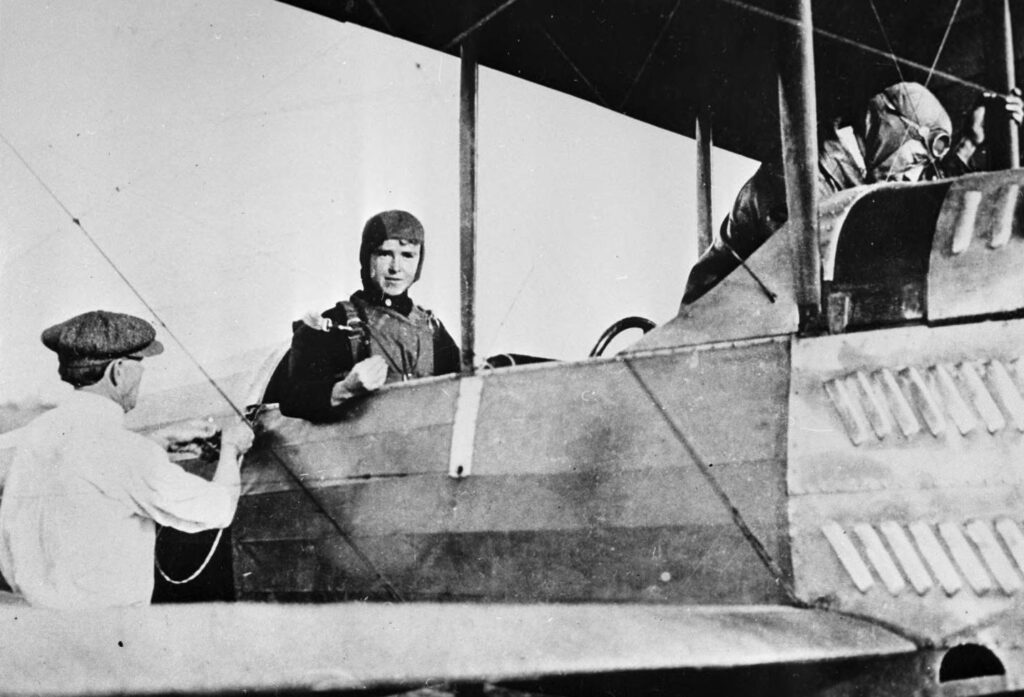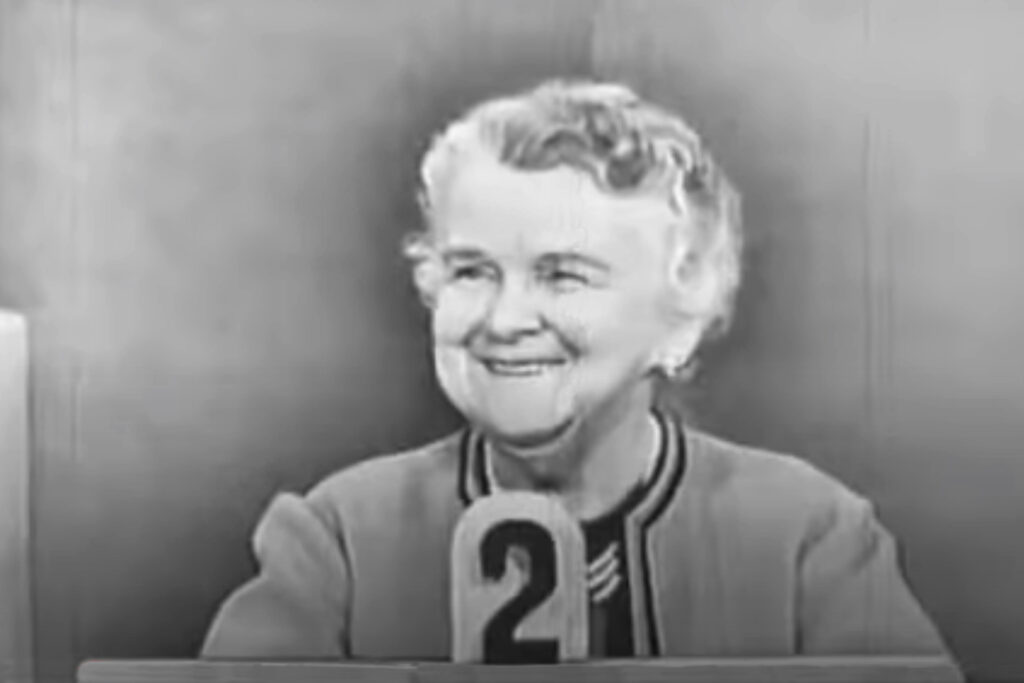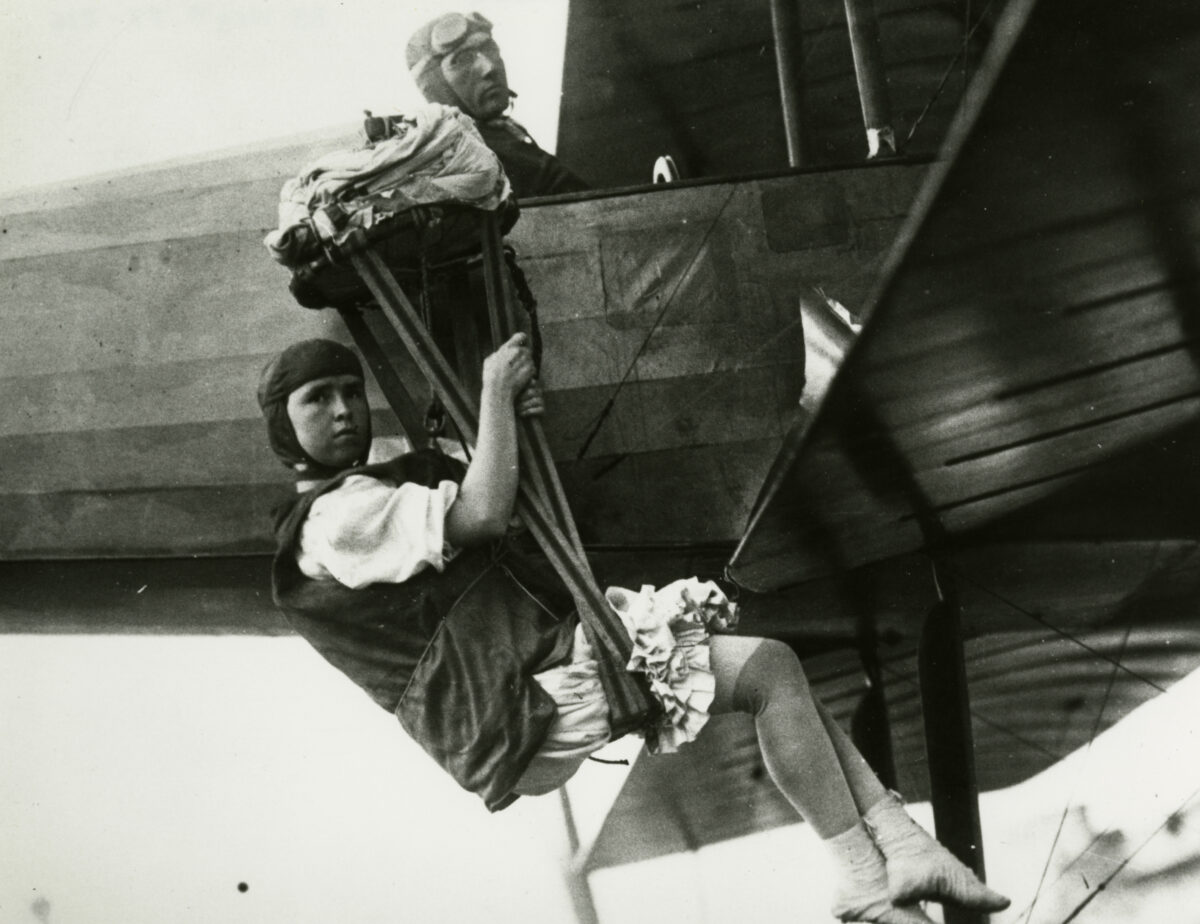On January 9, 1914, a diminutive young woman “stood poised for a moment on a step at the side of the Martin biplane, looked down 1,000 feet at the earth below, and stepped out into space as lightly and unconcernedly as though she were alighting from a street car.” “Tiny” Broad – wick’s successful parachute jump made headlines that day, but it was far from the first leap of faith for the 21-year-old daredevil de – scribed by a reporter as “a slip of a girl.”
Broadwick had gained a following on the barnstorming circuit, parachuting from balloons while dressed in a silk frock and ruffled bloomers. Born Georgia Ann Thompson in 1893, she was nicknamed “Tiny” in infancy. At 15, after watching Charles Broadwick leap from a balloon, she convinced her mother to let her join his performers. Broadwick adopted her, then marketed her as the “Doll Girl” and the “world’s most daring aviatrice-parachutist.”
In January 1912, the Los Angeles Times reported that Broadwick had mesmerized a crowd with her signature balloon leap at the International Air Meet. Her fearlessness and skill attracted the attention of Glenn Martin, whose aircraft firm was incorporated in LA that same year. He too had been on the barnstorming circuit, stunt-flying to finance his new venture. Thanks to a snappy uniform (black leather jacket, black trousers with black puttees, a black leather helmet and goggles), he was known as “The Flying Dude.” Martin saw Broadwick as a means of gaining publicity.
Of course, leaping from a plane was very different than jumping out of a balloon. Parachutes were bulky and awkward, and makers were still figuring out how to rig them so they wouldn’t get snagged on aircraft. As a result, early fliers didn’t routinely have chutes.
Glenn Martin hoped to change that with his “life pack” chute. Designed to be lighter than previous models, it was made of silk and enclosed in a khaki cover attached to a sleeveless jacket. Snaps on the cover would yield to the pressure of a cord, releasing the chute.

When Broadwick climbed into Martin’s biplane at Griffith Park aviation field, near LA, on January 9, 1914, she appeared to be wearing a knapsack. Los Angeles Times reporter Bonnie Glessner, who went along for the ride, wrote that “over her white dress was fastened a tan-colored jacket, and her shoulders bore, hump-like, a rude knapsack. She looked like a creature deformed as she sat waiting for the machine to reach…1,000 feet.” Glessner wrote that while they were traveling at “close to 80 mph….[t]here was a little flutter of white as ‘Tiny’ Broadwick, the human pawn in this battle to wrest another triumph from the air, leaped clear of the machine.”
The jump was so successful that she landed on her feet. Glessner wrote, “After she reached the earth she expressed the wish that all of the birdmen who had paid the penalty of scientific research or of recklessness in the air had had the same protecting device as that which was strapped about her frail ninety-eight pounds.”
According to many sources, Broadwick had actually jumped earlier from a Martin plane, on June 21, 1913. Elizabeth Roberson, Tiny’s biographer, described that test:
She used a parachute developed by Charles Broadwick. It was made of silk and, when packed, looked like a knapsack attached to a snug-fitting canvas jacket with harness straps. A string was fastened to the fuselage of the plane and woven through the parachute’s canvas covering, so that when the wearer jumped from the plane, the cover would be ripped off….Tiny was suspended from a trap seat behind the wing and outside the cockpit, with the parachute on a shelf above her. Martin took the plane up to two thousand feet, and then Tiny released a lever alongside the seat, allowing it to drop out from under her.
Tiny became the first person to jump from a hydroplane and the first woman to make a water jump, over Lake Michigan. She recalled: “Because of the long pontoon, it was safer if I hung from the side of plane…to clear it. The slipstream, hot oil from the engine and spray from the lake nearly blew me off the perch.”

Other milestones included jumping from a Curtiss aircraft to demonstrate a Broadwick chute for U.S. Army Brig. Gen. George P. Scriven, who called her a “plucky girl.” During that jump, she became the first person to make a free fall, since she had to cut a tangled static line before opening the chute. Her response to Scriven: “I don’t call it pluck. I call it joy.”
By the time Broadwick ended her career in 1922, she had made more than 1,000 jumps. She was honored by the OX5 Aviation Pioneers, the 82nd Airborne Division and the Early Birds of Aviation, among others. Before her death in 1978, she had the opportunity to fly in a blimp, a Learjet and a helicopter. Not surprisingly, none of that compared to the thrill of parachuting; late in life she declared, “current air travel is dull and unexciting.”
Originally published in the July 2009 issue of Aviation History. To subscribe, click here.





